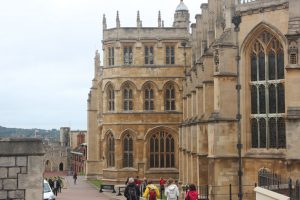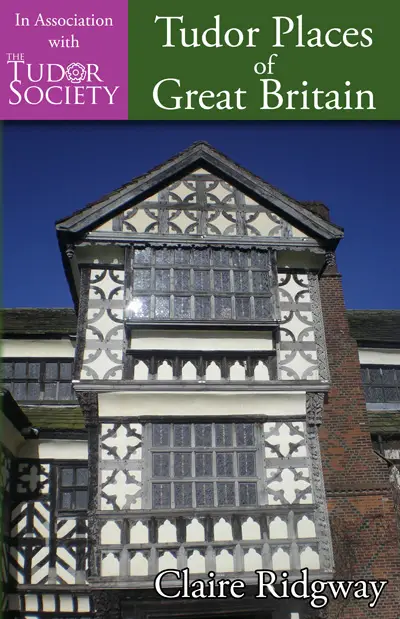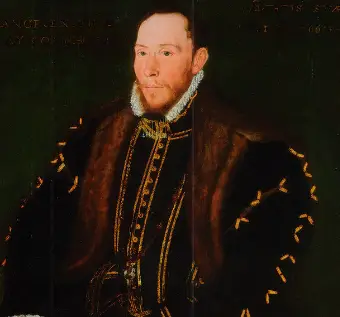 On this day in history, 13th November 1537, Queen Jane Seymour, third wife of Henry VIII, was laid to rest in St George's Chapel, Windsor Castle.
On this day in history, 13th November 1537, Queen Jane Seymour, third wife of Henry VIII, was laid to rest in St George's Chapel, Windsor Castle.
Jane's remains had been taken by chariot from Hampton Court Palace to Windsor Castle in a special procession the previous day - click here to read more about that. There had then been a special service followed by a solemn watch that night. On 13th November, "there was a solemne masse of requiem sunge by the Archbishopp of Canterburie; and the Bishop of Worcester, called Dr. Latimer, made a notable sermon; and at the offertorie all the estates offered ryche palls of clothe of golde [...]". The mass was followed by a banquet in the castle for all those who had attended the funeral.
Charles Wriothesley records that a solemn mass of requiem was said in every parish church in London "with all the bells ringing, from 9 of the clocke in the morninge tyll noone", including St Paul's:
"there was a solemne masse of requiem done at Powles, and all Powles queere offeringe at the same masse, the major [mayor], aldermen, and sheriffes, and the wardeins of everie crafte of the cittie of London ; and, after the sayde masse, the major and aldermen goeinge aboute the herse sayenge " De profundis," with all the craftes of the cittie followinge, everie one after their degrees, prayinge for the sowle of the sayde Queene."
Jane's body may have been buried at Windsor, but her entrails (and heart) were buried in the Chapel Royal of Hampton Court Palace:
"First the wax-chandler did his office, taking out the entrails "with searing, balming, spicing, and trammeling in cloth," then the plumber leaded, soldered, and chested; and her entrails were honourably interred in the chapel."
Members can find out more about death and burial in Tudor times in my two-part Claire Chats video talks on the subject:
- Burial in Tudor times Part 1: Shrouding
- Burial in Tudor times Part 2: Embalming and heart and entrails burial
Notes and Sources
Photo: St George's Chapel, Windsor Castle, by Tim Ridgway.
- Wriothesley, Charles. A chronicle of England during the reigns of the Tudors, from A.D. 1485 to 1559, Volume 1, p. 71-72.
- Letters and Papers, Foreign and Domestic, Henry VIII, Volume 12 Part 2, 1060: A remembrance of the interment of Queen Jane, mother of Edward VI., who died at Hampton Court, 24 Oct., on Wednesday about 12 p.m., in child-bed, 29 Henry VIII.



Do you think if her postpartum care had been better she might have survived?
It really is hard to know. Even today women can die after childbirth, it’s still a risky business with our medical advances. I wonder if she retained part of the placenta. These days, the placenta is examined carefully to make sure it is intact and there is also the injection which is often give to speed up the delivery of the placenta to ensure that it is not retained. Or perhaps she haemorrhaged because her womb had been ruptured or something. Today, there are things that could be done and some women have to have a hysterectomy. Or it may have been an infection like childbed fever and, of course, there were no antibiotics to clear that up. I don’t think there was anything that could be done about some of these possibilities.